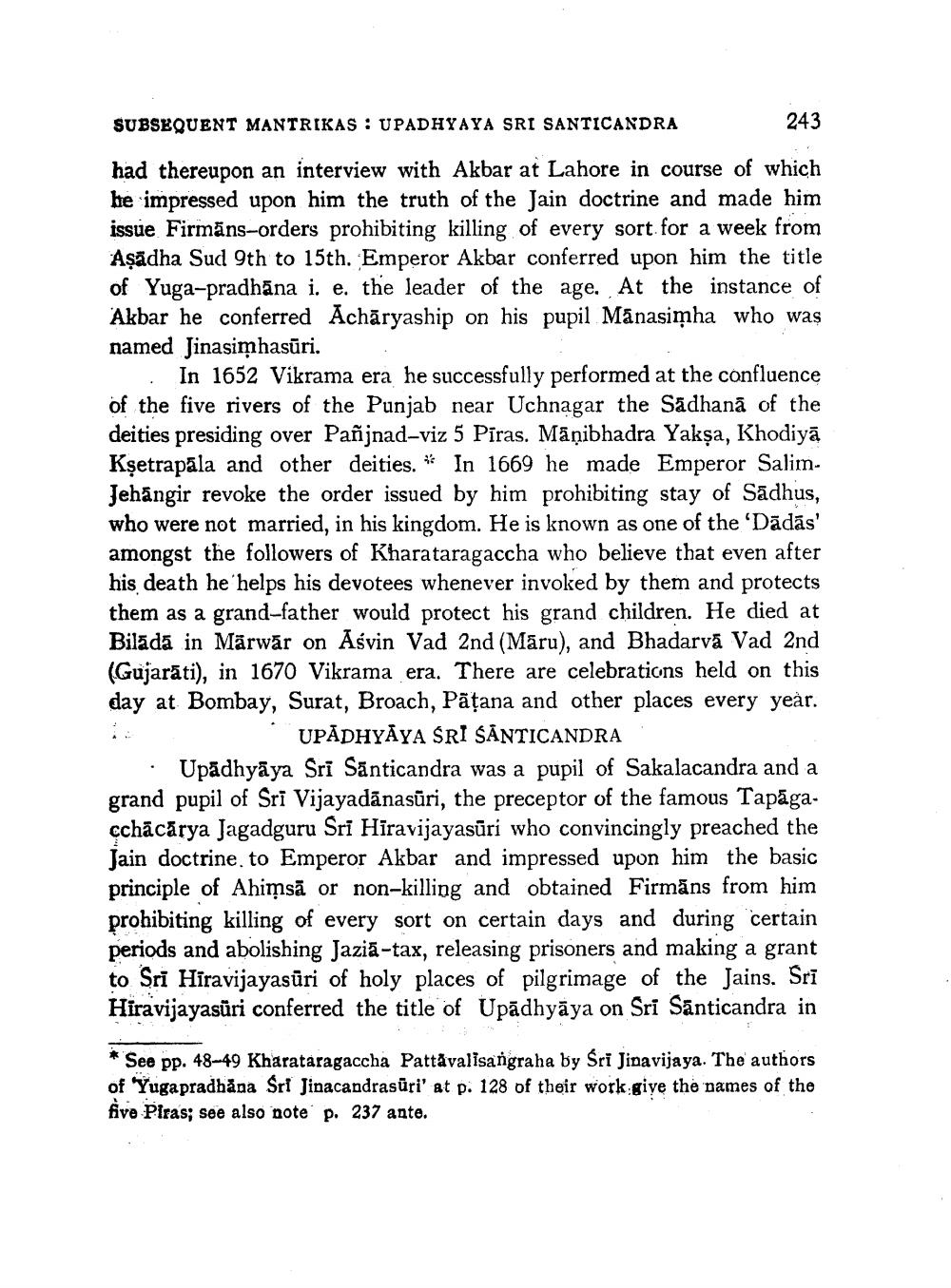________________
SUBSEQUENT MANTRIKAS UPADHYAYA SRI SANTICANDRA
243
had thereupon an interview with Akbar at Lahore in course of which he impressed upon him the truth of the Jain doctrine and made him issue Firmans-orders prohibiting killing of every sort for a week from Așadha Sud 9th to 15th. Emperor Akbar conferred upon him the title of Yuga-pradhana i. e. the leader of the age. At the instance of Akbar he conferred Acharyaship on his pupil Manasimha who was named Jinasimhasūri.
In 1652 Vikrama era he successfully performed at the confluence of the five rivers of the Punjab near Uchnagar the Sadhana of the deities presiding over Pañjnad-viz 5 Pīras. Māņibhadra Yakṣa, Khodiyā Kṣetrapala and other deities. In 1669 he made Emperor SalimJehangir revoke the order issued by him prohibiting stay of Sadhus, who were not married, in his kingdom. He is known as one of the 'Dādās' amongst the followers of Kharataragaccha who believe that even after his death he helps his devotees whenever invoked by them and protects them as a grand-father would protect his grand children. He died at Bilādā in Marwar on Asvin Vad 2nd (Māru), and Bhadarvā Vad 2nd (Gujarati), in 1670 Vikrama era. There are celebrations held on this day at Bombay, Surat, Broach, Pāṭana and other places every year. UPADHYAYA SRI SANTICANDRA
Upadhyaya Sri Santicandra was a pupil of Sakalacandra and a grand pupil of Sri Vijayadānasūri, the preceptor of the famous Tapagacchācārya Jagadguru Sri Hiravijayasuri who convincingly preached the Jain doctrine, to Emperor Akbar and impressed upon him the basic principle of Ahimsa or non-killing and obtained Firmāns from him prohibiting killing of every sort on certain days and during certain periods and abolishing Jazia-tax, releasing prisoners and making a grant to Sri Hiravijayasuri of holy places of pilgrimage of the Jains. Srī Hiravijayasüri conferred the title of Upadhyaya on Sri Santicandra in
See pp. 48-49 Kharataragaccha Pattavalisangraha by Śrī Jinavijaya. The authors of 'Yugapradhana Sri Jinacandrasuri' at p. 128 of their work give the names of the five Piras; see also note p. 237 ante.




